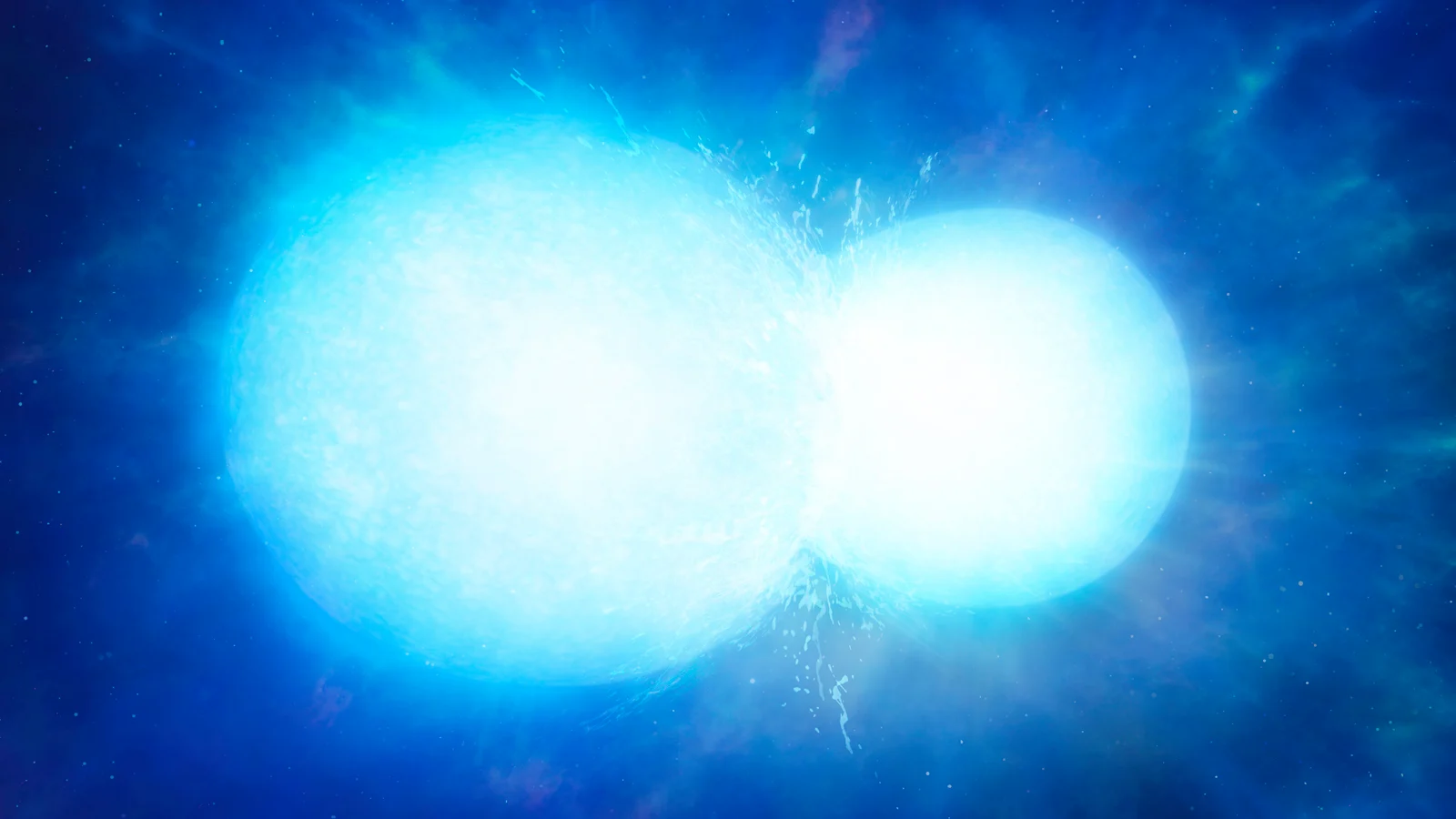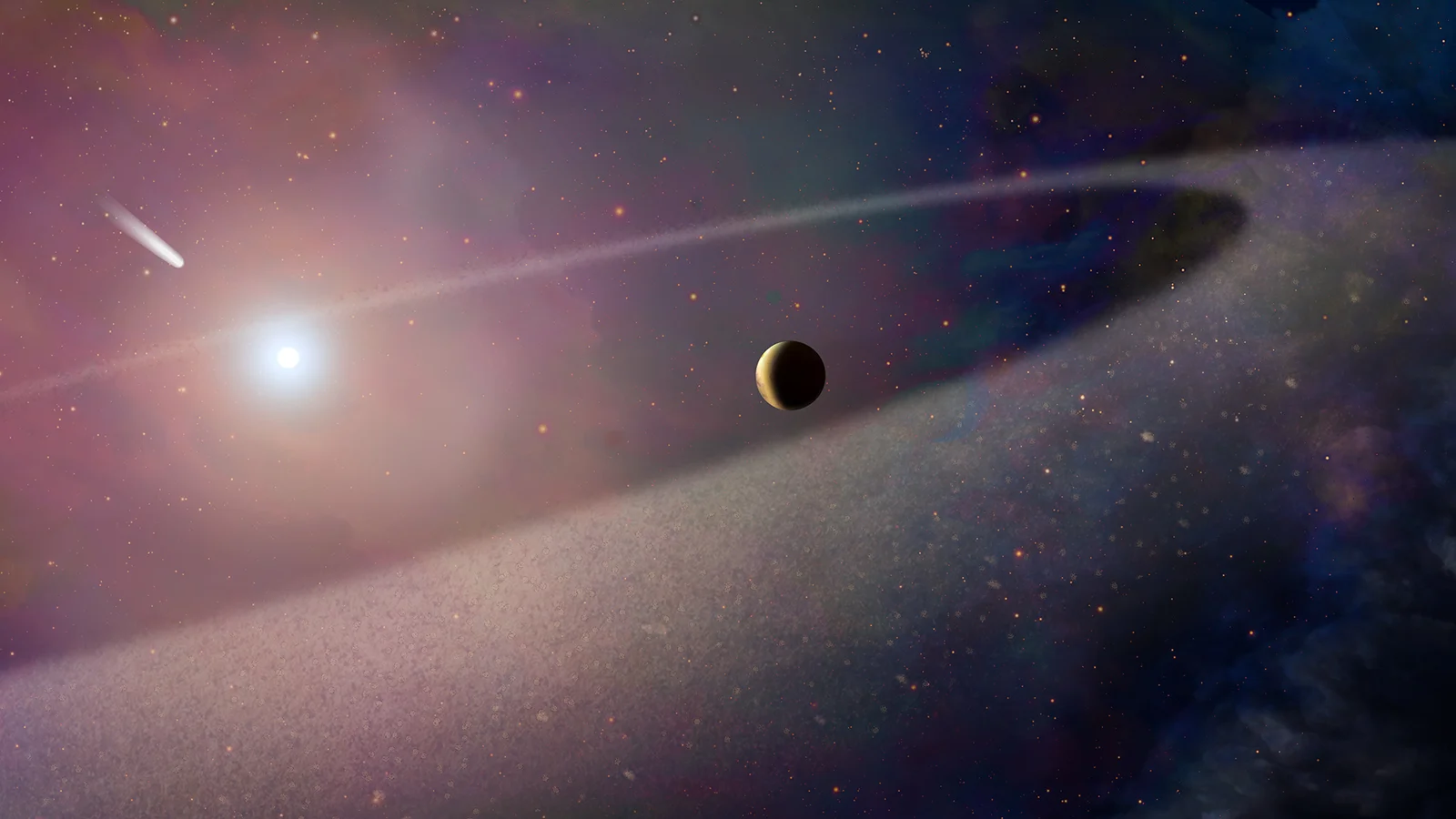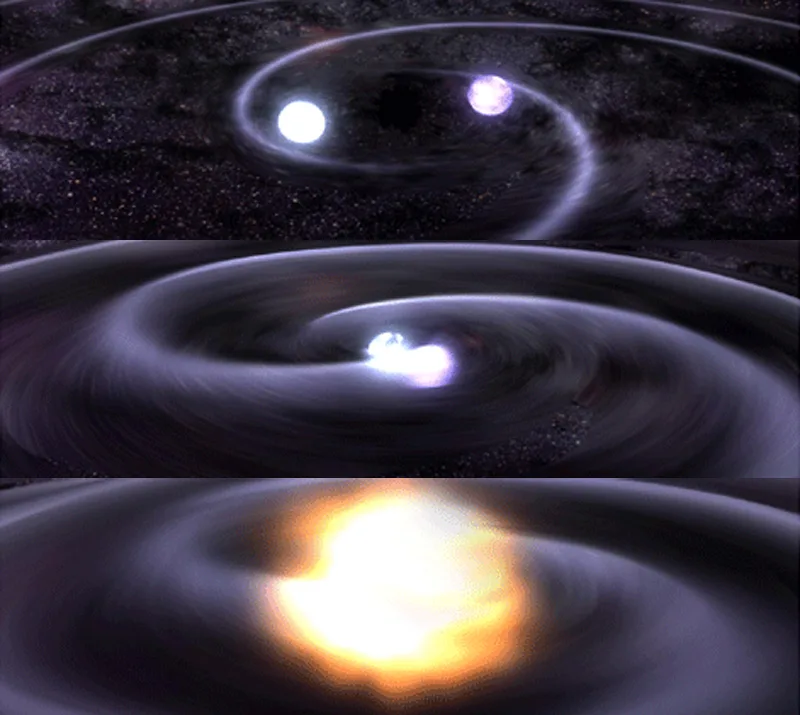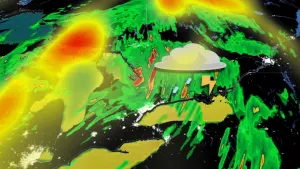
This bizarre 'space snowman' somehow escaped a cataclysmic fate
In the moments before two dead stars merged, they would have looked like a snowman in space
Astronomers recently discovered a dead star that was so strange, at first its very existence defied explanation.
Roughly 150 light years away from Earth, relatively close by when you consider how big space is, there is an unusual white dwarf star astronomers have named WDJ0551+4135. It is unusual in two distinct ways. First, it is exceptionally massive - like twice as massive as your average white dwarf. Second, the atmosphere that clings to this dead star is unlike anything astronomers have ever seen.
White dwarfs form when a star like our Sun reaches the end of its lifespan. The star fuses hydrogen into helium at its core for much of its life and then turns into a red giant as it fuses helium into carbon during its final billion years or so. Once it dies, the star blows its outer layers away, leaving behind an incredibly dense remnant - a core of carbon, overlayed by a thick layer of helium, wrapped in a thin envelope of hydrogen. These remnants typically pack roughly half the star's mass down into a ball about the same size as Earth.

Artist's concept of a white dwarf star still orbited by a gas giant and comets. Credits: NASA, ESA, and Z. Levy (STScI)
When astronomers from the University of Warwick spotted WDJ0551+4135, what they were seeing didn't add up. This ultramassive object, with its strange atmosphere, was undoubtedly a white dwarf, but based on what we know about how stars live and die, there was no explanation for how it could have formed.
According to the University of Warwick press release, there was another part to this mystery. Based on how fast it was cooling, WDJ0551+4135 appeared to be relatively young, but the speed it was travelling around the galaxy implied that it was far older.
"This star stood out as something we had never seen before," Study lead author Dr Mark Hollands, from the University of Warwick, said in a press release. "You might expect to see an outer layer of hydrogen, sometimes mixed with helium, or just a mix of helium and carbon. You don't expect to see this combination of hydrogen and carbon at the same time as there should be a thick layer of helium in between that prohibits that. When we looked at it, it didn't make any sense."
"We have a composition that we can't explain through normal stellar evolution, a mass twice the average for a white dwarf, and a kinematic age older than that inferred from cooling," Hollands added. "We're pretty sure of how one star forms one white dwarf and it shouldn't do this."
The only way this all makes sense, together, Holland said, was if this particular ultramassive white dwarf is the product of two normal-sized white dwarfs merging together.
In the time just before such a merger, the two dead stars would actually form something that looked like a snowman, hanging in space.

Artist's impression of two white dwarfs in the process of merging. Credit: University of Warwick/Mark Garlick
THE STRANGEST PART
A remarkable part of this discovery is that WDJ0551+4135 even exists right now.
When two Sun-like stars orbit each other as a binary pair, often one will expand into a red giant first, and then drag its companion in closer in due to friction with the red giant's atmosphere. When the primary finally becomes a white dwarf, and its companion swells into a red giant, the red giant's atmosphere pulls the white dwarf in, closing the distance between the two even more.
Finally, as the two white dwarfs circled each other, gravitational waves will slow them down, causing them to spiral in towards each other. Once they finally meet, they typically merge and then explode into a supernova, ripping both remnants apart.

This artist's impression of a white dwarf merger shows the colossal explosion that typically results from such an event. Credit: NASA/Dana Berry, Sky Works Digital
The fact that WDJ0551+4135 is there for astronomers to see right now means that something very unusual happened when the merger took place, which allowed the combined remnant to avoid that cataclysmic fate.
"Maybe the most exciting aspect of this star is that it must have just about failed to explode as a supernova," Hollands said. "Strange as it may sound, measuring the properties of this 'failed' supernova, and future look-alikes, is telling us a lot about the pathways to thermonuclear self-annihilation."
Source: University of Warwick | NASA










